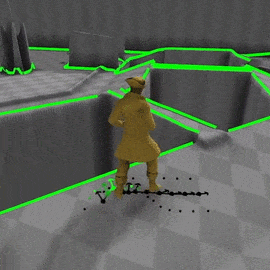We’ve all seen LED clocks where RGB LEDs are used to display time. It seems like the simpler the interface, the more likely you’d need to do math to figure out the time. This Octal Clock by [Alex Kurrasch] proves the point by using only four LEDs: the top two show hours and minutes, and the bottom two LEDs are multipliers.
 Using octal numbering, [Alex] translates the data using a Venn diagram of color mixing. The mapping uses 1 as red, 2 as green, followed by yellow, blue, magenta, and cyan. It ends with 7 as white (all on) and 0 as black (all off).
Using octal numbering, [Alex] translates the data using a Venn diagram of color mixing. The mapping uses 1 as red, 2 as green, followed by yellow, blue, magenta, and cyan. It ends with 7 as white (all on) and 0 as black (all off).
As the time changes, a fading algorithm changes the display to match. He offers the time of 7:38pm as an example in the grid shown here. Base-8 math is provided; don’t worry, you’ll get really good at this if you make your own wristwatch version… people will learn to never ask you about the time.
The clock uses a ATMega64 running assembly language firmware with a DS1306E+ RTC chip keeping track of time. The enclosure is cool too; [Alex] milled the case out of mahogany and the front and back plates are anodized aluminum. The unique looking diffusers on the LEDs are actually paraffin, a trick that [Elliot Williams] mentioned in his recent article on diffuser materials.



 [TegwynTwmffat] has
[TegwynTwmffat] has 

 To remedy the abrupt movements, [Daniel Holden et. al] recently
To remedy the abrupt movements, [Daniel Holden et. al] recently 















